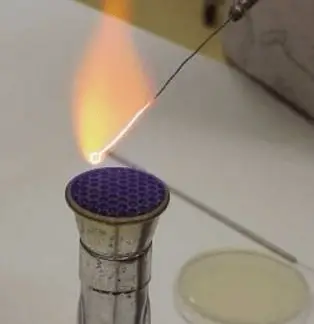Aseptic and sterile techniques are various methods of eliminating microscopic organisms that can contaminate a particular surface area or a volume of liquid. Although these are terms used to describe similar and closely related processes, they are not interchangeable. This article explains why.
Summary Table
| Aseptic | Sterilization |
| Minimizes contamination by harmful virus and bacteria | An aseptic technique involving the elimination of all microorganisms |
| Complex and expensive | Includes simple and inexpensive techniques |
| Usually employs a combination of techniques | Rarely uses a mix of several sterilization methods |
Definitions

An aseptic technique describes a set of procedures conducted to promote germ-free and sterile conditions. This involves practices used to promote asepsis (free of disease-carrying micro-organisms) in a surgical or medical procedure to prevent infection or contamination. Although there are no modern methods that can ensure this without causing major tissue damage to the patient, the objective of aseptic techniques is the elimination of the possibility of infection taking place.
The most common examples of aseptic techniques are performed in hospital operating rooms. The goal is to protect patients from microorganisms in the hospital as much as possible. This involves protecting wounds and other areas from developing an infection. In addition, the use of sterile equipment and fluids in invasive medical and nursing procedures help ensure this end is achieved.
Modern aseptic techniques involve strict hygienic practices. The operating room is prepared following specific guidelines in accordance with airflow and filtering regulations. A patient who is about to undergo a procedure is washed and required to wear a clean gown. The area to be operated on is washed and shaved if needed and germicide is applied. The surgical team are required to wash their hands and arms with an anti-germicidal solution. Moreover, sterile gowns and gloves, hair coverings, and surgical masks are strictly required.

The term sterilization refers to any procedure that aims to remove, eliminate, or kill all life forms and other biological organisms (e.g. bacteria, fungi, viruses, etc.) initially present in a specific area. This area can be a surface, a certain amount of fluid, or a medication. Sterilization is done through several means such as heat, irradiation, filtration, high pressure, or chemical treatment.
Sterilization is used on food products as well as in the medical and surgical fields.
Exposure to heat over a specific period slows the process of decay in food and other liquids. This allows food to be preserved over longer periods. Food canning operates on the same principle in addition to reducing the incidence of food poising.
Generally speaking, medications and surgical instruments are required to be sterilized as both enter a germ-free area of the body (e.g. bloodstream, beneath the skin). While newer low-temperature sterilization methods have been developed, steam sterilization is by far the most dependable and widely used method. It is inexpensive, non-toxic, and works efficiently in removing disease-causing microorganisms.
Spacecraft components undergo sterilization by being subjected to intense heat. This is in line with strict international agreements to avoid contamination of celestial bodies in the solar system by biological materials from Earth.
Aseptic vs Sterile
So what is the difference between aseptic and sterile techniques? Aseptic techniques are used to promote asepsis, a condition that is clear from harmful pathogens, viruses, parasites, fungi, and harmful spores. Sterilization is the process of eliminating living microorganisms of all shapes and forms. This process is done on specific areas, equipment, and food products.
Aseptic techniques include using barriers to prevent contamination (e.g. sterile gloves, gowns, masks, drapes). It also includes the use of sterile equipment in a sterile environment with only the necessary health personnel help control the spread of bacteria. Sterilization techniques include steaming, heating, filtration, irradiation, and the use of chemicals and high-pressure processes.





